Blog
 Our world has changed since the spread of the corona-virus (COVID-19). Life as we once knew it does not exist, at least for now. Instead our life and world has changed since the spread of this pandemic called “corona-virus (COVID-19).” Since the end of March, we have been in what I like to call “lock down,” also known as “self-isolation,” and two months later here we are finally starting the phase to gradually end the lock down and slowly resume life as we once knew it. While life is slowly resuming this does not mean we do not still have to practice social distancing or wearing our face mask. Who would have ever thought we would be wearing face masks out in public to prevent the risk of spreading or contracting the virus – even if we don’t have the virus wearing the mask is respectful to others, even if you don’t like it. Today, we are maintaining social distancing and wearing face masks, parents are now home school teachers, essential workers are teleworking from home – while font-line essential workers have to leave their home to go to work every day and risk their health and life as well as their family.
Our world has changed since the spread of the corona-virus (COVID-19). Life as we once knew it does not exist, at least for now. Instead our life and world has changed since the spread of this pandemic called “corona-virus (COVID-19).” Since the end of March, we have been in what I like to call “lock down,” also known as “self-isolation,” and two months later here we are finally starting the phase to gradually end the lock down and slowly resume life as we once knew it. While life is slowly resuming this does not mean we do not still have to practice social distancing or wearing our face mask. Who would have ever thought we would be wearing face masks out in public to prevent the risk of spreading or contracting the virus – even if we don’t have the virus wearing the mask is respectful to others, even if you don’t like it. Today, we are maintaining social distancing and wearing face masks, parents are now home school teachers, essential workers are teleworking from home – while font-line essential workers have to leave their home to go to work every day and risk their health and life as well as their family.
I like to take a moment to personally say THANK YOU to all our Healthcare Workers, Doctors, Nurses, EMT’s, Law Enforcement, Fire Fighters and Grocery Store workers for all YOU have done for us. You are out there every day risking your health and life to save ours. Let us not forget about our grocery store workers who are making sure the shelves are well stocked with food and supplies for us. If you have not said “Thank You” to any of these Essential Front-line workers, would you today? It is about making a difference and impact on a person’s life and putting a smile on both of your faces. It does not have to be a grand gesture; it can be as simple as a wave or a smile to show that you care. During times like this it is nice to know you are appreciated.
Who would have ever thought we would be living in an era of a pandemic? Having to raise our children or grandchildren through this is even more difficult in times like this. If you have young children, I can only imagine how hard this is on them. Young children do not understand why they cannot have a birthday party or play with their friends or go to school, etc. It is not only difficult and challenging for adults, it also is for young children as well.
While it is vital for people to stay home on lock down, I have noticed how communities are coming together to help their neighbors and local businesses. It is the act of kindness that can make a big difference during these difficult and challenging times. One thing I have noticed is the nice gesture local Law Enforcement, Fire Departments and EMT’s are making by coming forward to help make a child’s birthday special or a day special for an elderly person. If it is your birthday or special day, why not make a lot of noise. The children love seeing the flashing lights and hearing the sirens, we know that children would prefer a birthday party with cake and ice cream and presents to open.
 In recent years High School and College Graduates celebrate commencement with a ceremony in achieving their milestone, and afterwards a BIG celebration thrown by their parents with family and friends. For these graduates walking across the stage is not just about a celebration, it is about the recognition of all their hard work, sacrifices that they have made and their achievements. This year will be especially hard for many graduates for many different reasons. Graduation ceremonies will be different or challenging due to the pandemic of COVID-19.
In recent years High School and College Graduates celebrate commencement with a ceremony in achieving their milestone, and afterwards a BIG celebration thrown by their parents with family and friends. For these graduates walking across the stage is not just about a celebration, it is about the recognition of all their hard work, sacrifices that they have made and their achievements. This year will be especially hard for many graduates for many different reasons. Graduation ceremonies will be different or challenging due to the pandemic of COVID-19.  This year is especially heartbreaking, so many missed opportunities to celebrate achievements and milestones for high school seniors. This was their last year to do all the fun stuff seniors love to do, such as senior prom, senior trip, senior week, senior awards ceremony/banquet, and graduation. Let us not forget about our College graduate, for them this is also a milestone. It is a celebration and momentous time for them and their family, especially if they are the first in their family to attend college and graduate. This is a difficult time for any High School Senior and College Graduate, this is the most important milestone of their life. In honor of our High School and College graduates ‘Class of 2020,’ I would like you to know this is YOUR YEAR!
This year is especially heartbreaking, so many missed opportunities to celebrate achievements and milestones for high school seniors. This was their last year to do all the fun stuff seniors love to do, such as senior prom, senior trip, senior week, senior awards ceremony/banquet, and graduation. Let us not forget about our College graduate, for them this is also a milestone. It is a celebration and momentous time for them and their family, especially if they are the first in their family to attend college and graduate. This is a difficult time for any High School Senior and College Graduate, this is the most important milestone of their life. In honor of our High School and College graduates ‘Class of 2020,’ I would like you to know this is YOUR YEAR!  How is your community coming together in celebrating high school and college graduates or graduation ceremonies?
How is your community coming together in celebrating high school and college graduates or graduation ceremonies?

Blog
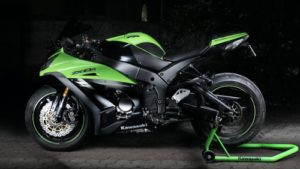
Motorcycles can be as pricey as vehicles – there are some motorcycles that are priced on the low end. Do you know what the 10 most expensive motorcycles are for 2020?
- Confderate FA=13 Combat Bomber – priced around $143,948
- Brough Superior Anniversay – priced around $103,114
- Bimota Tesi H2 – priced around $60.995
- Ducati Panigale V4 Anniversario 916 – priced around $45,130
- MV Augsta Brutale 1000 Serie Oro – priced around $44,328
- Horex VR6 Café Racer HL – priced around $43,823
- Harley-Davidson CVO Limited – priced around $43,422
- Honda GoldWing Tour DCT – $37,449
- Ariel Ace ‘Iron Horse’ – priced $36,213
- Kawasaki Ninja H2 Carbon – priced $34,767
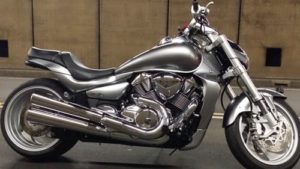 When it comes to motorcycle type everybody has a specific style they like. Here are six main categories that are recognized:
When it comes to motorcycle type everybody has a specific style they like. Here are six main categories that are recognized:
- Cruiser
- Sport
- Touring
- Standard
- Dual-purpose
- Dirt Bike
When it comes to motorcycle insurance the question I most often hear is, why is the insurance premium so high? Motorcycles are much riskier to drive than most vehicles or other transportation. When it comes to motorcycle insurance, insurance companies consider a multitude of factors, such as type of motorcycle, age, riding history, tickets and/or accident and claim history, coverage’s, location, and credit.
Motorcycle safety tips
- Always wear your helmet with a face shield and protective eye-wear.
- Wear suitable clothing such as gloves, jacket, long pants, and closed shoes. This will help minimize any injuries you will encounter in the event of an accident or skid.
- Obey traffic rules.
- Make sure your headlights are always on, stay out of a driver’s blind spot, signal well in advance when changing lanes or turning, and pay attention to turning vehicles. Most importantly – Ride defensively.
- Take a motorcycle safety course. This course is not designed for new drivers, anyone can take a refresher course to help with forgotten or neglected skills. Completion of a Motorcycle Safety Course may lower your insurance rates.
- Be awake and do not drink and drive. Ride sober.
Stay safe and enjoy your ride. 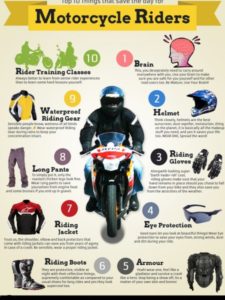
Blog
Are you getting Married?
What is Wedding Insurance Coverage? 
Wedding insurance is special event insurance that protects a couple’s investment that are beyond their control. Wedding insurance protects you from losses that may arise due to any unforeseen circumstance.
Various factors that may occur –
- Venues closing
- Vendor no shows
- Stolen gifts
- Damaged gown
- Extreme weather
- Sickness or injury
- And more
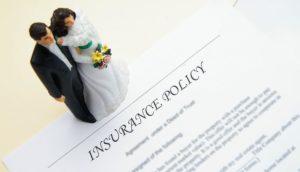 Wedding insurance policy coverage’s
Wedding insurance policy coverage’s
Liability Insurance – Wedding liability insurance covers damages to the venue or injuries to guests.
Liquor Liability – This is optional wedding day coverage that can protect against on premises alcohol-related accidents that can result in your liability. (Check to see if liquor liability is included or is an optional coverage in your policy.)
Cancellation or postponement coverage – Wedding Insurance cancellation coverage helps protect you from financial loss if your event needs to be canceled or postponed due to family illness, extreme weather, bride or groom being called for military deployment, or some other unexpected reason.
What Does Wedding Insurance Cover?
- Wedding Video/Photo Coverage – Wedding insurance includes coverage for photos and videos. If your photographer or videographer doesn’t show up for the event, or does not deliver photos and videos when promised, you’re covered
- Protection for Wedding Gifts – Provides coverage for wedding gifts (excluding cash and gift cards).
- Special Attire and Jewelry Coverage – Covers for lost or damage dresses or attire. Special jewelry coverage includes lost or damaged wedding rings (may or may not be included in your policy. Not all policies cover jewelry coverage).
- Coverage for Lost Deposits – Wedding Insurance protects lost deposits, such as those paid to bakers, caterers, bridal boutiques and wedding venues that go out of business.
- Additional Wedding Expenses – Wedding Insurance can provide coverage for additional and unexpected expensed that come up, such as replacing a damaged wedding cake, spoiled food and other glitches in catering and entertainment.
Wedding insurance doesn’t cover
A wedding policy will cover about anything outside of you control that will ruin your big day. There are some things that a wedding policy will not cover.
- Cold feet or change of heart with a few exceptions.
- A rainy day, rather than extreme weather.
- Deciding to switch to a different vendor, such as a caterer or florist, once you’ve already paid a deposit.
It’s a good idea to purchase your wedding insurance as soon as your start incurring expenses. Keep in mind, there may be restriction when you may be able to purchase cancellation coverage – often no later than 15 days before the event but no sooner than two years prior. You may be able to purchase liability coverage up to one day prior to the event.
Hopefully your wedding day goes of just as you planned but having wedding insurance provides you with security and peace of mind so you can focus on getting ready for your big day.
Blog
Auto | Home | Business 
Despite what you may think, an insurance review doesn’t have to be as involved or a time-consuming endeavor. A conversation or a visit with your agent can help make sure you’re knowledgeable about your insurance coverage and comfortable that your limits are meeting your current needs.
When the bill arrives in the mail to pay your insurance premiums, this should prompt a reaction to review your policy. Insurance policies can be changed to accommodate changes in your life or circumstances. Many consumers don’t understand what coverage they have and could be uninsured or paying more than they need in insurance premium. Reviewing your insurance premiums and coverage should be done annually. Failure to do this could result in paying higher premium or a headache down the road.
Home
When your homeowner’s insurance is up for renewal, it’s important to review each piece. Even if you haven’t made any significant developments or improvements to your home, it is possible that other changes have occurred that your insurance agent should know about. Changes in the real estate market may affect the current policy or changes in lifestyle, living situation, or income are all factors to consider when reviewing your homeowner’s policy.
Auto
Auto insurance policies should be reviewed to ensure you have adequate coverage and protection for all drivers. If you have a new driver on your policy, it may be a good time to increase coverage. In addition to adding or changing the vehicles on your policy, it is important to review your driving habits. Are you driving more compared to last year or less? Will you have any upcoming road trips that may require additional coverage? If the value of your car has dipped below $2,500 it may be a good time to remove collision coverage and have liability only. If you take the time to review these aspects each year, it will help save you money and provide you with peace of mind.
Business
When small business owners are focused on the day-to-day activity of a growing business, it can be hard to realize all the small changes occurring that may affect insurance rates. Perhaps you have purchased new equipment, additional vehicles, or developed new products or services. On the other hand, if your business is struggling and has lost money, you may want to lower your policy limit in order to accommodate a reduced value. This will also reduce your premium and save you a little money.
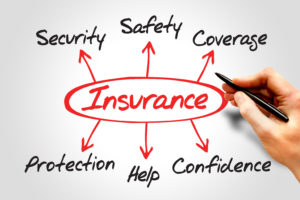
Blog
Snowmobile Safety Tips 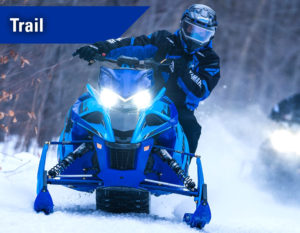
It’s that time of year and winter has arrived, and the snow has begun fall. If you own a snowmobile than you are ready to start riding and enjoying your time on the snowmobile trails. While snowmobiling can be exhilarating experience and fun during the winter season, it can also be a very dangerous if proper safety precautions are not taken. To protect you and keep you safe here are some important snowmobile safety tips.
- Take a snowmobile safety course. Have you taken your safety course? While many states require a snowmobile certificate each state has its own set of rules, laws and regulations. A snowmobile safety course will instruct you on how to ride safely and responsibly, as well as teach you the rules. It is especially essential and helpful for those first-time drivers or riders. You will learn riding techniques that will help you operate the snowmobile and avoid any hazards.
- Check the weather forecast and the trail conditions. Before heading out on the trail it’s always a good idea to check the weather forecast and trail conditions. You do not want to put yourself or someone else in danger if the trail is frozen, the wind chill is too low, or a blizzard with white out conditions is in the forecast. If this is the case, then you should plan your ride for another day. By checking the weather, it helps you select the proper clothing for the day.
- Wear proper cloths and protective gear. Staying warm and dry during your ride is essential to staying safe and making your ride more enjoyable. Wear a snowmobile suit, which consists of a jacket and insulated bibs. Make sure you are dressed in layers under your snowmobile suit. Make sure you stay away from cotton in case it gets wet, if that happens it will freeze and that will not be good. Choose polyester blends to hold moisture away from your body. If you do not have a full-face helmet, make sure you wear goggles or a face shield, socks (NO cotton), waterproof gloves, winter hat, face-mask and winter boots. Always wear a DOT-approved helmet, not only to keep you warm but to protect your head from injury. Make sure children have a helmet that properly fits them.
- Inspect your snowmobile before your ride. Before you hit the trail make sure your snowmobile is running properly. Make sure you have your owner’s manual handy on your ride for extra safety. It’s important to follow the recommended service schedule to keep it maintained and running smoothly. Make sure you check fuel and oil levels, battery, brakes, drive belt, skis, throttle, handlebars, headlights and taillights before your ride. Before you take off on your snowmobile, make sure you allow your snowmobile time to run for at least a minute to warm up.
- Bring a buddy. Riding with a friend or in a group is fun, but also safer, especially on trails you have never taken before. It’s always a good idea to have someone with you in case your snowmobile breaks down or you get into an accident. Make sure you tell a family member or a friend your plans and route for your ride, just in case you get stranded. FYI, cell phones don’t always work in remote areas.
- Carry a first-aid kit, emergency kit and repair kit. It’s essential to carry a basic first-aid kit in snowmobile in case of injury. Your kit should include disinfecting wipes, bandages, hand sanitizer, gauze, adhesive tape and Band-Aids. In addition, carry an emergency kit with waterproof matches, flashlight, compass, map, blanket, water, snacks and a knife. A repair kit should include duct tape, tools, spare belt, tow rope, spark plugs and pry bar.
- Stay Alert. It’s important to be observant and watch for obstacles in your path, such as rocks, fallen trees, barbed wire fences, ditches, open water, other snowmobiles, snowbanks, animals, hikers and skiers.
- Avoid frozen rivers. It’s impossible to gauge the thickness of ice. Ice can easily crack and give way under your snowmobile.
- Do not speed. By driving at a moderate speed, it will help you to react quickly to a situation on the trail and will help you to avoid an accident. Many trails have posted speed limits to follow.
- Stay on the trail. Make sure you stay on the marked trails as they have been groomed for you and are less likely to have any dangerous hazards. Going off the trail could result in accidents as you are treading in unfamiliar territory, and you may also get lost and not be able to find your way back. Many public trails run close to private property. Unless you have received permission from the landowner, stay on the marked trail. Failure to comply may result in a trail being closed to the public in the future. Be a responsible rider by following the posted signs and trail markers.
- Driver should be the age of 16 or older. The American Academy of Pediatrics strongly recommends that children under the age of 16 do not operate a snowmobile. The reason is due to the lack of skills needed to safely operate the vehicle and due to their stature can be easily injured.
- Children under the age of six should never ride as a passenger according to the American Academy of Pediatrics. The snowmobile can ride rough and it takes a strong person to hold on tight, especially for long periods of time. Children under the age of six lack this strength.
- Do not overload your snowmobile. Make sure you review your manufacturer’s guide for the approved number of passengers and also the amount of weight it may be able to carry. Exceeding these maximums either from an additional passenger or heavy gear can increase your chances of an accident or injury.
- Never drink and drive.
It’s the law. Just like driving a vehicle, operating a snowmobile while under the influence can lead to delayed response and you could cause an accident and injury to yourself or someone else.
- Do not pull people on anything behind your snowmobile. Snowmobiles were not designed to pull sleds, skiers or saucers and it’s unsafe.
We hope these snowmobile safety tips lead to a fun and safe riding experience. If you’re looking for snowmobile insurance or shopping for new snowmobile insurance give us a call, we would be happy to quote your snowmobile insurance. We specialize in snowmobile insurance coverage tailored to meet your unique needs. 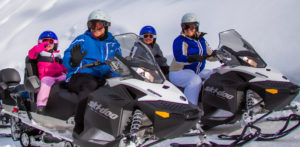
 Our world has changed since the spread of the corona-virus (COVID-19). Life as we once knew it does not exist, at least for now. Instead our life and world has changed since the spread of this pandemic called “corona-virus (COVID-19).” Since the end of March, we have been in what I like to call “lock down,” also known as “self-isolation,” and two months later here we are finally starting the phase to gradually end the lock down and slowly resume life as we once knew it. While life is slowly resuming this does not mean we do not still have to practice social distancing or wearing our face mask. Who would have ever thought we would be wearing face masks out in public to prevent the risk of spreading or contracting the virus – even if we don’t have the virus wearing the mask is respectful to others, even if you don’t like it. Today, we are maintaining social distancing and wearing face masks, parents are now home school teachers, essential workers are teleworking from home – while font-line essential workers have to leave their home to go to work every day and risk their health and life as well as their family.
Our world has changed since the spread of the corona-virus (COVID-19). Life as we once knew it does not exist, at least for now. Instead our life and world has changed since the spread of this pandemic called “corona-virus (COVID-19).” Since the end of March, we have been in what I like to call “lock down,” also known as “self-isolation,” and two months later here we are finally starting the phase to gradually end the lock down and slowly resume life as we once knew it. While life is slowly resuming this does not mean we do not still have to practice social distancing or wearing our face mask. Who would have ever thought we would be wearing face masks out in public to prevent the risk of spreading or contracting the virus – even if we don’t have the virus wearing the mask is respectful to others, even if you don’t like it. Today, we are maintaining social distancing and wearing face masks, parents are now home school teachers, essential workers are teleworking from home – while font-line essential workers have to leave their home to go to work every day and risk their health and life as well as their family. In recent years High School and College Graduates celebrate commencement with a ceremony in achieving their milestone, and afterwards a BIG celebration thrown by their parents with family and friends. For these graduates walking across the stage is not just about a celebration, it is about the recognition of all their hard work, sacrifices that they have made and their achievements. This year will be especially hard for many graduates for many different reasons. Graduation ceremonies will be different or challenging due to the pandemic of COVID-19.
In recent years High School and College Graduates celebrate commencement with a ceremony in achieving their milestone, and afterwards a BIG celebration thrown by their parents with family and friends. For these graduates walking across the stage is not just about a celebration, it is about the recognition of all their hard work, sacrifices that they have made and their achievements. This year will be especially hard for many graduates for many different reasons. Graduation ceremonies will be different or challenging due to the pandemic of COVID-19.  This year is especially heartbreaking, so many missed opportunities to celebrate achievements and milestones for high school seniors. This was their last year to do all the fun stuff seniors love to do, such as senior prom, senior trip, senior week, senior awards ceremony/banquet, and graduation. Let us not forget about our College graduate, for them this is also a milestone. It is a celebration and momentous time for them and their family, especially if they are the first in their family to attend college and graduate. This is a difficult time for any High School Senior and College Graduate, this is the most important milestone of their life. In honor of our High School and College graduates ‘Class of 2020,’ I would like you to know this is YOUR YEAR!
This year is especially heartbreaking, so many missed opportunities to celebrate achievements and milestones for high school seniors. This was their last year to do all the fun stuff seniors love to do, such as senior prom, senior trip, senior week, senior awards ceremony/banquet, and graduation. Let us not forget about our College graduate, for them this is also a milestone. It is a celebration and momentous time for them and their family, especially if they are the first in their family to attend college and graduate. This is a difficult time for any High School Senior and College Graduate, this is the most important milestone of their life. In honor of our High School and College graduates ‘Class of 2020,’ I would like you to know this is YOUR YEAR!  How is your community coming together in celebrating high school and college graduates or graduation ceremonies?
How is your community coming together in celebrating high school and college graduates or graduation ceremonies?









